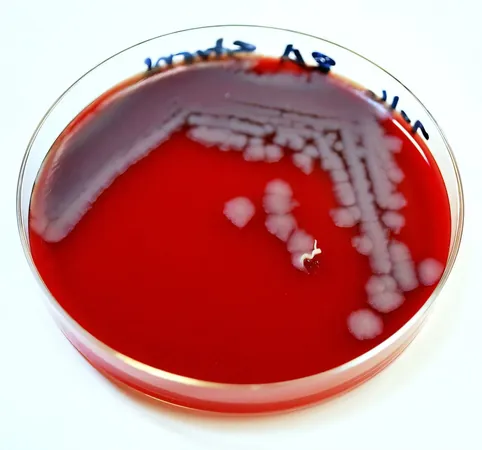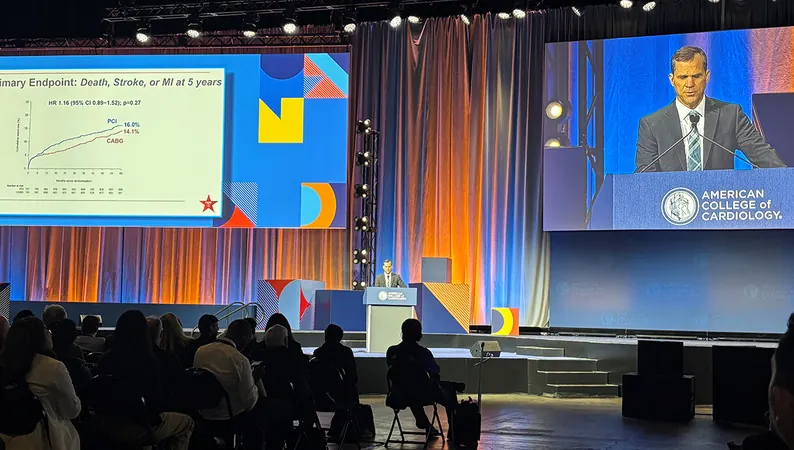
Breakthrough in Anthrax Treatment: Hope Beyond the 'Point of No Return'
2025-03-28
Author: Jia
Anthrax, a potentially deadly infectious disease caused by the bacterium Bacillus anthracis, often proves treatable if caught early. However, patients who progress beyond what researchers refer to as the "point of no return," typically within a few days of infection, face dire consequences with little hope of recovery.
A groundbreaking study published in *Nature Microbiology* by researchers from the University of Pittsburgh reveals that a cocktail of growth factors has the potential to reverse life-threatening cell damage in mice infected with anthrax. This innovative approach hints at the possibility of adapting the treatment for later-stage patients who might otherwise succumb to the disease.
Senior author Dr. Shihui Liu, an associate professor of medicine at the Pitt School of Medicine, emphasized the ongoing concern of anthrax as a potential bioweapon despite only a few deaths occurring annually in the United States. "The early symptoms of anthrax are often vague and resemble flu-like conditions, increasing the risk of late diagnosis. We urgently need new strategies to address the later stages of this disease," Liu stated.
The mechanism of anthrax infection is alarming. When Bacillus anthracis enters the body—whether through inhalation, ingestion, injection, or skin contact—it releases two proteins that form a lethal toxin. Although early intervention with antibiotics can eliminate the bacterium, or antibodies can neutralize the toxin, the situation becomes grim once the toxin penetrates the cells. This toxin disrupts crucial enzymes called MEKs, responsible for controlling cell signaling pathways, leading to catastrophic cellular damage and death.
To investigate the role of MEK-controlled pathways in anthrax toxicity, Liu's team developed genetically modified mice with MEKs resistant to the lethal toxin's cleaving action. Specifically, MEK1 and MEK2 are involved in the ERK pathway, crucial for cell division and survival, while MEK3 and MEK6 are part of the p38 pathway, which assists in defense against stress. Surprisingly, mice with modified MEK proteins exhibited significantly higher survival rates when exposed to lethal agents compared to normal mice, confirming that anthrax requires inactivation of both pathways to be fatal.
The researchers further discovered that exposing both mice and human cells to a combination of three growth factors—each of which has previously received approval for other medical applications—reactivated the ERK pathway, thereby rescuing cells from impending doom after exposure to the toxin. Dr. Liu expressed astonishment at this finding, stating, "Initially, we believed that the damage caused by the lethal toxin was irreversible, making the ability of these growth factors to reactivate the ERK pathway a significant revelation."
This research not only broadens the understanding of anthrax's cellular impact but also hints at a potential pathway to save lives by applying already-approved treatments in a novel context. With further study, this approach could transform how late-stage anthrax infections are managed, heralding a new era in the fight against this formidable bacterium.
Stay tuned as the medical community watches closely for future updates on this revolutionary treatment strategy!


 Brasil (PT)
Brasil (PT)
 Canada (EN)
Canada (EN)
 Chile (ES)
Chile (ES)
 Česko (CS)
Česko (CS)
 대한민국 (KO)
대한민국 (KO)
 España (ES)
España (ES)
 France (FR)
France (FR)
 Hong Kong (EN)
Hong Kong (EN)
 Italia (IT)
Italia (IT)
 日本 (JA)
日本 (JA)
 Magyarország (HU)
Magyarország (HU)
 Norge (NO)
Norge (NO)
 Polska (PL)
Polska (PL)
 Schweiz (DE)
Schweiz (DE)
 Singapore (EN)
Singapore (EN)
 Sverige (SV)
Sverige (SV)
 Suomi (FI)
Suomi (FI)
 Türkiye (TR)
Türkiye (TR)
 الإمارات العربية المتحدة (AR)
الإمارات العربية المتحدة (AR)